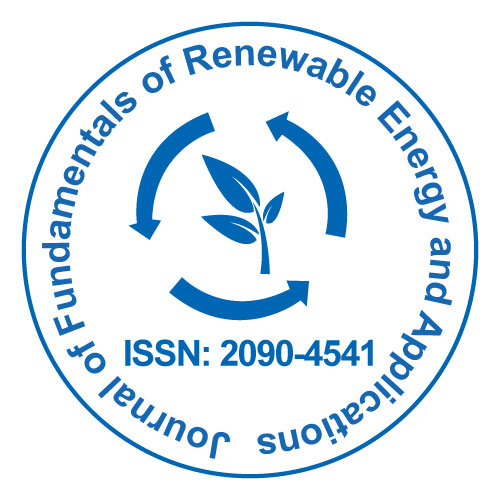
Tagebuch des fondamentaux de l'énergie renouvelable et des applications
Libre accès
ISSN: 2090-4541

ISSN: 2090-4541
Giuliano Degrassi
Bioénergie 2020 : Prétraitement enzymatique de la biomasse pour améliorer la production de biogazGiuliano Degrassi
Centre international de génie génétique et de biotechnologie (ICGEB), Italie
Production of biogas from biomasses and organic residues by anaerobic digestion using methanogenic bacteria is a crucial biotechnological process for sustainable production of biofuel. One among the limiting factors of this process is that the poor conversion rate into biogas of the energy contained within the biomass. This is often mainly thanks to the difficult metabolism of the plant cell membrane components by the microbial consortium present within the digestor, mainly thanks to the complexity of cellulose, hemicellulose and lignin. Cellulose is extremely abundant and its full conversion into methane would increase the efficiency of the method. Biogas production from polysaccharides and other biopolymers occurs through four steps: hydrolysis, acidogenesis, acetogenesis and methanogenesis. It’s evident the importance of a more efficient hydrolysis to urge more biogas produced. We developed three heterologous expression systems for production of the subsequent enzymes: (i) – endocellulase (endo-glucanase) from Bacillus pumilus (ii) - cellobiohydrolase from Xanthomonas sp. (iii) - beta-glucosidase from Bacillus amyloliquefaciens These three enzymes are known to participate within the depolymerization of cellulose that happens in three steps: (i) cellulose polymer cleavage and oligomers formation; (ii) removal of dimers (cellobiose) from the cellulose oligomers; (iii) release of glucose from cellobiose dimers. The three genes encoding the above-mentioned enzymes were amplified by PCR, cloned in pTOPO, sequenced to verify the right amplification, then cloned in pQE, an expression vector giving 6xHis tagged proteins. E. coli M15 was the expression system. The three enzymes were then purified by one step-affinity chromatography, because of the six-histidine tag, and utilized in the experiments of cellulose digestion. Considering that two enzymes weren't soluble when expressed in E. coli (cellobiohydrolase and beta-glucosidase formed inclusion bodies), an alternate heterologous expression system was taken into consideration for the assembly of the enzymes, the yeast Pichia pastoris. The ultimate goal of the project is that the development of a pre-treatment method to be used for the conversion of biomasses and agro-industrial organic residues containing cellulose into a substrate to be fermented by methanogenic bacteria for production of biogas. While the heterologous expression in Pichia remains under development, we have already got an efficient system for production of the recombinant bacterial endo-glucanase. The optimal conditions for the utilization of this enzyme are determined: the optimal pH is 6.0 and therefore the optimal temperature is 40 C. In these conditions, pH 6.0 and temperature of 40ºC, the enzyme maintained up to 50% of its activity after one week. The enzyme was tested on some substrates and was found to be ready to depolymerize microfibril cellulose (Sigma), residual short fiber cellulose from paper industry, corn cob powder and corn stalk powder with a selected activity of 251, 142, 75 and 70 IU/mg, respectively. We are currently measuring the methanogenic potential of various cellulose-containing organic residues with and without pre-treatment with the cellulolytic enzyme. Following this experiment, the economic sustainability of this process are going to be calculated, comparing the value of pre-treatment and therefore the benefit achieved in term of increased biogas production.